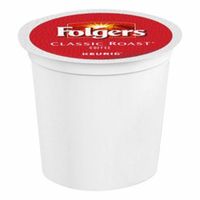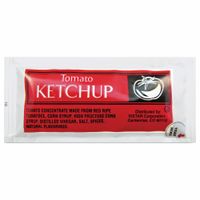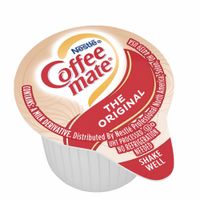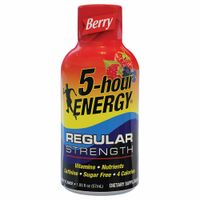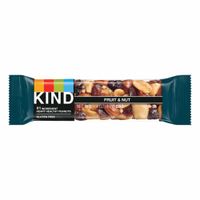Call +(254) 703 030 000 / 751 483 999 / 721 704 777
- Home
- Furnishings Appliances Hospitality
- Coffee Snacks Condiments
Frequently Asked Questions
What are the health benefits of drinking coffee?
Coffee consumption has been linked to several potential health benefits. It is a rich source of antioxidants, which can help protect the body from damage caused by free radicals. Studies suggest that regular coffee intake may be associated with a lower risk of developing certain diseases, including type 2 diabetes, Parkinson's disease, and some types of cancer, such as liver and colorectal cancer. Coffee can also improve brain function, including memory, mood, vigilance, energy levels, and reaction times, primarily due to its caffeine content. Furthermore, caffeine can boost metabolic rate and enhance physical performance. Some research also indicates a potential link between coffee consumption and a reduced risk of depression. However, it's important to note that the effects of coffee can vary among individuals, and excessive consumption may lead to adverse effects like anxiety, insomnia, and increased heart rate.
How much caffeine is in a cup of tea?
The amount of caffeine in a cup of tea can vary significantly depending on several factors, including the type of tea, brewing time, and water temperature. Generally, an 8-ounce cup of black tea contains about 25-48 mg of caffeine, while green tea typically has 25-29 mg. White tea has even less, around 6-25 mg. Herbal teas, such as chamomile or peppermint, are naturally caffeine-free.
What is the best way to brew coffee at home?
The "best" way to brew coffee at home often depends on personal preference and desired flavor profile, but here are some popular and effective methods:1. **Pour Over (e.g., Hario V60, Chemex):** This method offers excellent control over variables like water temperature, pour rate, and bloom time, leading to a clean, bright, and nuanced cup. It requires a bit of technique and specialized equipment but is highly rewarding for those who enjoy a delicate and aromatic brew.
2. **French Press:** For a full-bodied, rich, and robust cup with a lot of sediment, the French Press is a classic choice. It's simple to use and doesn't require paper filters, allowing more coffee oils to pass through, which contributes to its characteristic flavor and mouthfeel.
3. **Aeropress:** Versatile and compact, the Aeropress can brew a concentrated shot for espresso-like drinks or a full-bodied cup. It's known for its quick brewing time and clean taste due to its paper filter, making it great for travel or a fast, consistent brew.
4. **Drip Coffee Maker:** Convenient and easy to use, especially for brewing larger batches. While often seen as less artisanal, a good quality drip machine with proper water temperature and showerhead design can produce a perfectly satisfying and consistent cup of coffee.Regardless of the method, key factors for a great brew include using freshly roasted, quality coffee beans, grinding them just before brewing, using filtered water at the optimal temperature (around 195-205°F or 90-96°C), and maintaining the correct coffee-to-water ratio (typically 1:15 to 1:18). Experimenting with different methods and variables will help you discover your perfect home brewing routine.
How do creamers and sweeteners affect the taste of coffee?
Creamers and sweeteners significantly alter the taste of coffee by changing its flavor profile, texture, and aroma. Creamers, whether dairy or non-dairy, add richness and a smoother mouthfeel, reducing the bitterness and acidity often present in black coffee. They can introduce a variety of flavors, such as vanilla, hazelnut, or chocolate, depending on the creamer type. This addition of fat and sometimes sugar in creamers also contributes to a more rounded and less intense coffee taste.
Sweeteners, on the other hand, primarily focus on reducing the perceived bitterness and enhancing the sweetness of the coffee. Sugar (sucrose) adds a clean sweetness, while artificial sweeteners like aspartame or sucralose provide sweetness with fewer calories, though they can sometimes leave an aftertaste. Natural sweeteners like honey or maple syrup can introduce their own distinct flavors, adding complexity beyond just sweetness.
Together, creamers and sweeteners can transform the coffee experience, making it more palatable for those who find black coffee too strong or bitter. They allow for a customizable beverage that caters to individual preferences, offering a wide range of flavor combinations and textural experiences. However, excessive use can mask the inherent qualities of the coffee itself, such as its origin-specific notes or roast profiles.
What are the differences between green tea and black tea?
Green tea and black tea both come from the Camellia sinensis plant, but their processing methods differ significantly, leading to distinct flavors, aromas, and chemical compositions. The primary difference lies in oxidation.
Black tea undergoes full oxidation, where the tea leaves are withered, rolled, and then exposed to air. This process causes enzymes in the leaves to react with oxygen, resulting in the characteristic dark color, robust flavor, and malty notes. Examples include Assam and Earl Grey.
Green tea, on the other hand, is minimally oxidized. Immediately after harvesting, the leaves are heated (either steamed in Japan or pan-fired in China) to prevent oxidation. This preserves the natural green color and leads to a fresher, sometimes grassy or vegetal flavor profile. Examples include Sencha and Matcha.
Due to these processing differences, black tea generally has higher caffeine content than green tea, although this can vary depending on the specific tea. In terms of health benefits, both teas are rich in antioxidants, but the types and quantities of these compounds can differ. Green tea is often associated with catechins, while black tea contains theaflavins and thearubigins, which are formed during oxidation.
How do energy drinks impact health?
Energy drinks can have various impacts on health, both positive and negative. On the positive side, they can temporarily boost alertness and cognitive function due to their caffeine content, which can be beneficial for tasks requiring focus or during periods of fatigue. Some energy drinks also contain B vitamins, which play a role in energy metabolism, and other ingredients like taurine or ginseng, though their specific health benefits in these quantities are debated.
However, the potential negative impacts are more concerning. The high caffeine content can lead to increased heart rate, elevated blood pressure, heart palpitations, and, in severe cases, arrhythmias. This is particularly risky for individuals with underlying heart conditions. The large amounts of sugar in many energy drinks contribute to weight gain, increased risk of type 2 diabetes, and dental problems. The combination of caffeine and sugar can also lead to energy crashes and withdrawal symptoms like headaches and irritability.
Furthermore, mixing energy drinks with alcohol is a dangerous practice, as it can mask the effects of alcohol, leading to excessive consumption and increased risk of alcohol poisoning. The addictive nature of caffeine can also lead to dependence, with individuals experiencing withdrawal symptoms if they try to cut back. Overall, while energy drinks can offer a temporary jolt, their regular or excessive consumption carries significant health risks, and safer alternatives for boosting energy, such as adequate sleep, a balanced diet, and regular exercise, are generally recommended.
What are the most popular snack foods for a quick meal?
The most popular snack foods for a quick meal often balance convenience, taste, and a degree of satiety. Common choices include items that are easy to prepare or eat on the go. Fruits like apples, bananas, and oranges are popular due to their natural sweetness and fiber content. Nuts and seeds, such as almonds, walnuts, and pumpkin seeds, offer healthy fats and protein, providing sustained energy. Yogurt, especially Greek yogurt, is a good source of protein and can be paired with fruit or granola. Cheese sticks or slices are also a quick protein-rich option. For something more savory, whole-grain crackers with cheese or hummus can be a satisfying choice. Energy bars or granola bars are convenient, but it's important to check their sugar content. Vegetables like carrot sticks, cucumber slices, or bell pepper strips with a dip like hummus or guacamole provide vitamins and fiber. These options are favored for their ability to curb hunger between meals without requiring extensive preparation, making them ideal for busy schedules.
How do you make homemade juice?
Please specify the topic you would like me to elaborate on.
What are the best condiments to enhance food flavor?
Condiments play a vital role in enhancing food flavor, offering a spectrum of tastes from savory to sweet, tangy to spicy. Some of the best condiments known for their flavor-boosting capabilities include: * **Soy Sauce:** A staple in Asian cuisine, its umami-rich, salty profile deepens the flavor of stir-fries, marinades, and dipping sauces.
* **Mustard:** Available in various forms like Dijon, whole grain, or yellow, mustard adds a pungent, tangy kick to sandwiches, dressings, and roasted meats.
* **Vinegar (Balsamic, Apple Cider, Red Wine):** Different types of vinegar provide distinct acidic notes. Balsamic offers a sweet-tart complexity, while apple cider vinegar provides a brighter tang, excellent for salads and glazes.
* **Hot Sauce:** For those who enjoy a fiery kick, hot sauces like sriracha, tabasco, or gochujang add heat and often a unique fermented flavor that can elevate almost any dish.
* **Mayonnaise:** Its creamy texture and rich, slightly tangy flavor make it a versatile condiment for sandwiches, burgers, and as a base for various sauces.
* **Ketchup:** A classic for a reason, its sweet and tangy tomato-based flavor is a universal favorite, especially with fries and burgers.
* **Pesto:** Made from basil, pine nuts, garlic, Parmesan cheese, and olive oil, pesto offers a fresh, herbaceous, and savory flavor perfect for pasta, sandwiches, or as a spread.
* **Salsa:** Whether tomato-based or fruit-based, salsa adds freshness, acidity, and often a bit of spice, ideal for tacos, grilled meats, or as a dip.The "best" condiment often depends on the specific dish and personal preference, as each brings its unique contribution to the overall taste experience. Experimenting with different condiments can transform ordinary meals into culinary delights.
What ingredients should I look for in healthy pet treats?
When choosing healthy pet treats, prioritize natural, whole ingredients. Look for a named animal protein (like chicken, beef, or salmon) as the primary ingredient. Vegetables and fruits such as sweet potatoes, carrots, apples, and blueberries provide essential vitamins, minerals, and fiber. Whole grains like brown rice or oats, in moderation, can also be beneficial.
Avoid treats with artificial colors, flavors, and preservatives, which can be harmful. Steer clear of excessive sugar, salt, and unhealthy fats. Also, be wary of fillers like corn, wheat, and soy, especially if your pet has sensitivities. Always check for ingredients that might be common allergens for pets.
Ultimately, the best healthy pet treats are those made with recognizable ingredients that support your pet's overall well-being and are free from unnecessary additives.
